Vasilis Belis
Guided Graph Compression for Quantum Graph Neural Networks
Jun 11, 2025Abstract:Graph Neural Networks (GNNs) are effective for processing graph-structured data but face challenges with large graphs due to high memory requirements and inefficient sparse matrix operations on GPUs. Quantum Computing (QC) offers a promising avenue to address these issues and inspires new algorithmic approaches. In particular, Quantum Graph Neural Networks (QGNNs) have been explored in recent literature. However, current quantum hardware limits the dimension of the data that can be effectively encoded. Existing approaches either simplify datasets manually or use artificial graph datasets. This work introduces the Guided Graph Compression (GGC) framework, which uses a graph autoencoder to reduce both the number of nodes and the dimensionality of node features. The compression is guided to enhance the performance of a downstream classification task, which can be applied either with a quantum or a classical classifier. The framework is evaluated on the Jet Tagging task, a classification problem of fundamental importance in high energy physics that involves distinguishing particle jets initiated by quarks from those by gluons. The GGC is compared against using the autoencoder as a standalone preprocessing step and against a baseline classical GNN classifier. Our numerical results demonstrate that GGC outperforms both alternatives, while also facilitating the testing of novel QGNN ansatzes on realistic datasets.
Guided Quantum Compression for Higgs Identification
Feb 14, 2024
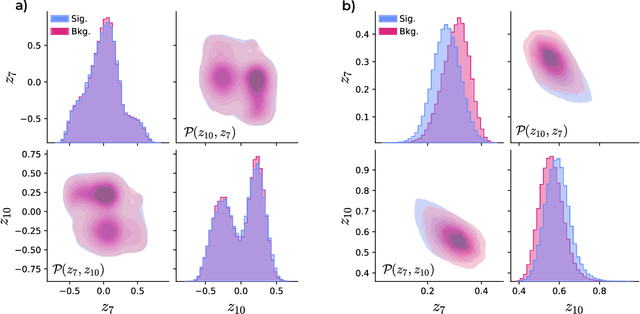
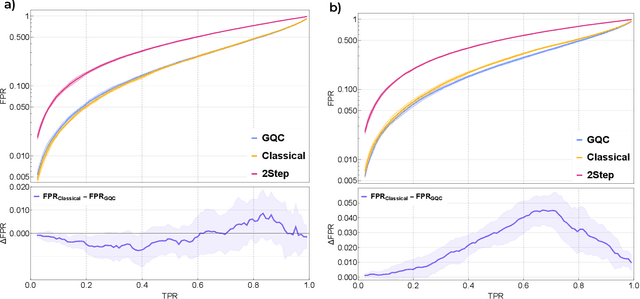

Abstract:Quantum machine learning provides a fundamentally novel and promising approach to analyzing data. However, many data sets are too complex for currently available quantum computers. Consequently, quantum machine learning applications conventionally resort to dimensionality reduction algorithms, e.g., auto-encoders, before passing data through the quantum models. We show that using a classical auto-encoder as an independent preprocessing step can significantly decrease the classification performance of a quantum machine learning algorithm. To ameliorate this issue, we design an architecture that unifies the preprocessing and quantum classification algorithms into a single trainable model: the guided quantum compression model. The utility of this model is demonstrated by using it to identify the Higgs boson in proton-proton collisions at the LHC, where the conventional approach proves ineffective. Conversely, the guided quantum compression model excels at solving this classification problem, achieving a good accuracy. Additionally, the model developed herein shows better performance compared to the classical benchmark when using only low-level kinematic features.
Machine Learning for Anomaly Detection in Particle Physics
Dec 20, 2023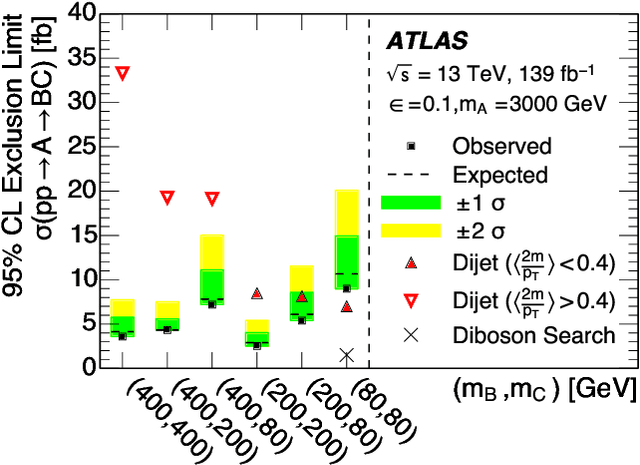
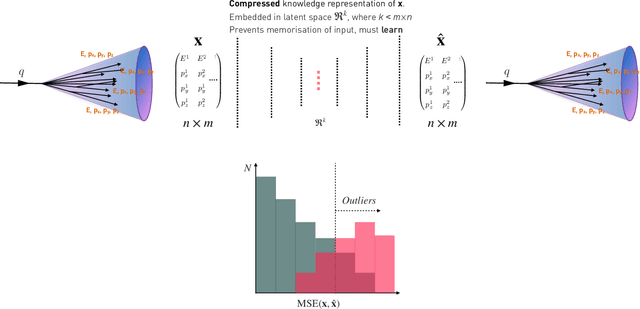
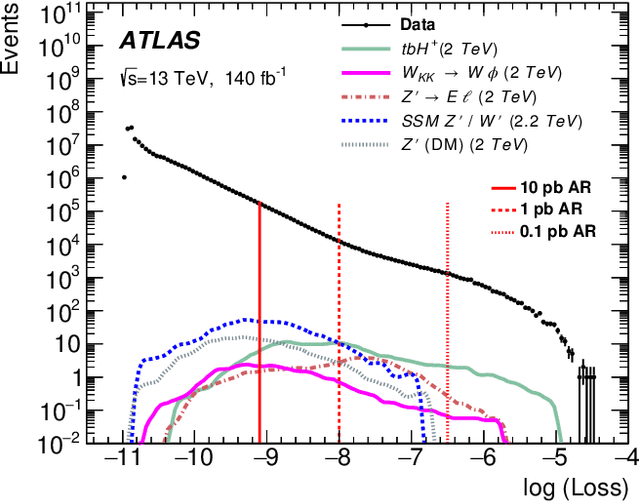
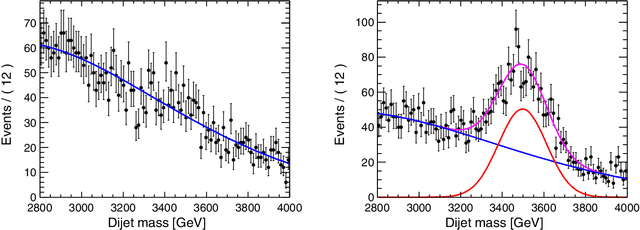
Abstract:The detection of out-of-distribution data points is a common task in particle physics. It is used for monitoring complex particle detectors or for identifying rare and unexpected events that may be indicative of new phenomena or physics beyond the Standard Model. Recent advances in Machine Learning for anomaly detection have encouraged the utilization of such techniques on particle physics problems. This review article provides an overview of the state-of-the-art techniques for anomaly detection in particle physics using machine learning. We discuss the challenges associated with anomaly detection in large and complex data sets, such as those produced by high-energy particle colliders, and highlight some of the successful applications of anomaly detection in particle physics experiments.
Provable advantages of kernel-based quantum learners and quantum preprocessing based on Grover's algorithm
Sep 25, 2023Abstract:There is an ongoing effort to find quantum speedups for learning problems. Recently, [Y. Liu et al., Nat. Phys. $\textbf{17}$, 1013--1017 (2021)] have proven an exponential speedup for quantum support vector machines by leveraging the speedup of Shor's algorithm. We expand upon this result and identify a speedup utilizing Grover's algorithm in the kernel of a support vector machine. To show the practicality of the kernel structure we apply it to a problem related to pattern matching, providing a practical yet provable advantage. Moreover, we show that combining quantum computation in a preprocessing step with classical methods for classification further improves classifier performance.
Unravelling physics beyond the standard model with classical and quantum anomaly detection
Jan 27, 2023Abstract:Much hope for finding new physics phenomena at microscopic scale relies on the observations obtained from High Energy Physics experiments, like the ones performed at the Large Hadron Collider (LHC). However, current experiments do not indicate clear signs of new physics that could guide the development of additional Beyond Standard Model (BSM) theories. Identifying signatures of new physics out of the enormous amount of data produced at the LHC falls into the class of anomaly detection and constitutes one of the greatest computational challenges. In this article, we propose a novel strategy to perform anomaly detection in a supervised learning setting, based on the artificial creation of anomalies through a random process. For the resulting supervised learning problem, we successfully apply classical and quantum Support Vector Classifiers (CSVC and QSVC respectively) to identify the artificial anomalies among the SM events. Even more promising, we find that employing an SVC trained to identify the artificial anomalies, it is possible to identify realistic BSM events with high accuracy. In parallel, we also explore the potential of quantum algorithms for improving the classification accuracy and provide plausible conditions for the best exploitation of this novel computational paradigm.
Quantum anomaly detection in the latent space of proton collision events at the LHC
Jan 25, 2023Abstract:We propose a new strategy for anomaly detection at the LHC based on unsupervised quantum machine learning algorithms. To accommodate the constraints on the problem size dictated by the limitations of current quantum hardware we develop a classical convolutional autoencoder. The designed quantum anomaly detection models, namely an unsupervised kernel machine and two clustering algorithms, are trained to find new-physics events in the latent representation of LHC data produced by the autoencoder. The performance of the quantum algorithms is benchmarked against classical counterparts on different new-physics scenarios and its dependence on the dimensionality of the latent space and the size of the training dataset is studied. For kernel-based anomaly detection, we identify a regime where the quantum model significantly outperforms its classical counterpart. An instance of the kernel machine is implemented on a quantum computer to verify its suitability for available hardware. We demonstrate that the observed consistent performance advantage is related to the inherent quantum properties of the circuit used.
 Add to Chrome
Add to Chrome Add to Firefox
Add to Firefox Add to Edge
Add to Edge